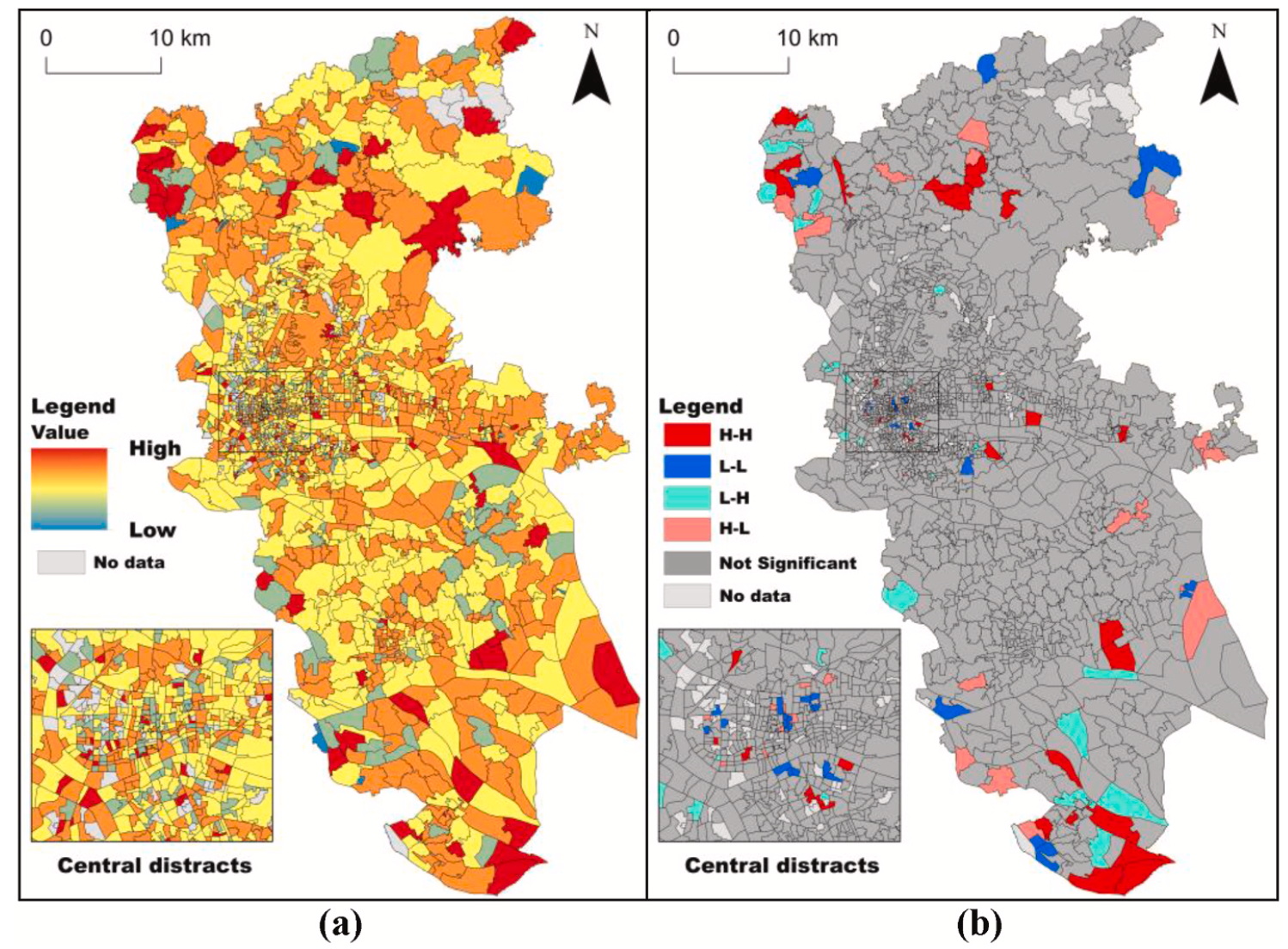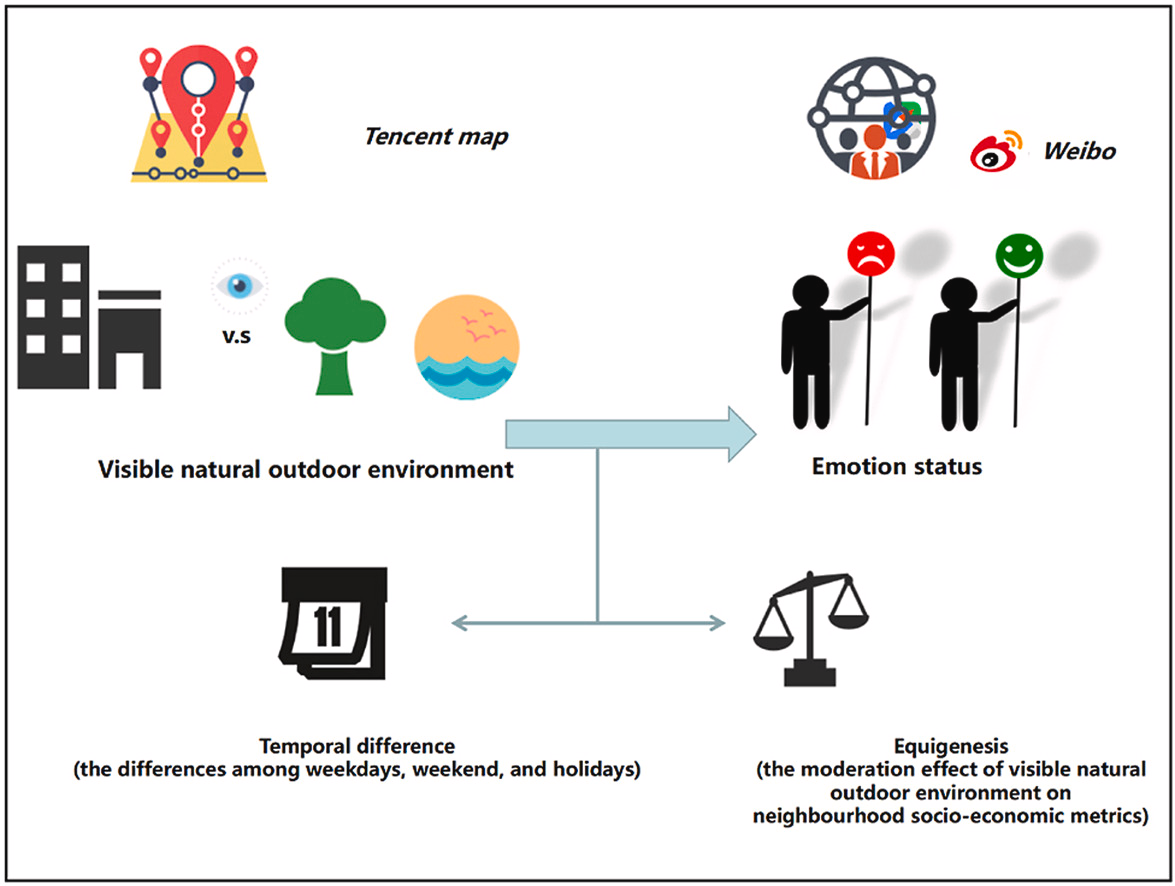Title:Visible green space predicts emotion: Evidence from social media and street view data

Highlights
- Assessed natural outdoor environment-emotion associations with social media and street view data.
- Higher levels of visible green space were associated with lower levels of negative emotions.
- Associations were stronger during non-work times
- No associations were observed for visible blue space except in interactions with socioeconomic status.
Abstract
Social media data are increasingly used to examine associations between environmental exposures and mental wellbeing. In particular, studies highlight that exposure to natural outdoor environments (NOEs) is associated with fewer negative emotions. Also, people in socioeconomically disadvantaged neighbourhoods tend to benefit more from NOEs than their counterparts in more privileged neighbourhoods ("equigenic" effects). However, exposure to NOEs is principally studied with remotely sensed data that fail to measure peoples' lived experience and the visible environment at eye-level. The current study explored relationships between two forms of NOEs (green and blue spaces) using Tencent Map street view imagery and negative emotions from social media Weibo microblogs in 1540 neighborhoods of Guangzhou, China. Negative emotions and exposure to visible green and blue space were assessed at the neighborhood-level (averaged by neighborhood). Higher levels of visible green space were associated with lower levels of negative emotions (3rd quartile: coefficient [coef.] = −0.006, 95% confidence interval [CI] = −0.012 to −0.000; 4th quartile: coef. = −0.007, CI = −0.013 to −0.001), and these associations were stronger during non-work times. No associations were observed for visible blue space except in interactions with socioeconomic status (SES); blue space provided an equigenic effect whereby people in lower-SES neighborhoods expressed fewer negative emotions than other lower-SES neighbourhoods without blue space. Because negative emotions are strongly linked to depression and anxiety, the importance of green and blue space visible at eye-level should be considered when promoting equitable public health.
Graphical abstract

Keywords
Greenness; Mood; Big data; Machine learning; Health disparities
Full Text Download
Q.E.D.









